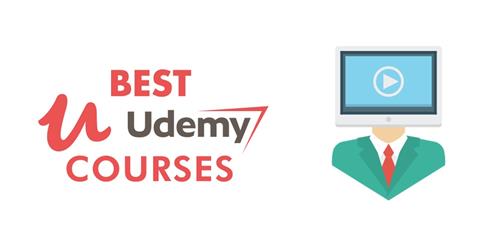
Free Download Applied Python Scripting Solving Problems with Codes
Published 3/2024
Created by EDUCBA Bridging the Gap
MP4 | Video: h264, 1280x720 | Audio: AAC, 44.1 KHz, 2 Ch
Genre: eLearning | Language: English | Duration: 41 Lectures ( 5h 15m ) | Size: 2.2 GB
Python Scripting through case studies, variables, conditional statements, loops, functions, classes and data structures
What you'll learn:
Fundamentals of Python Scripting: Understand the basics of Python scripting language, including variables, basic programming concepts, and user input.
Control Structures: Learn about if-else statements and loops to control the flow of execution in Python scripts.
Data Structures: Explore essential data structures such as lists and tuples and understand their usage in Python scripting.
Functions and Classes: Dive into functions and classes to organize code effectively and create reusable components.
Interactive Shell Usage: Gain proficiency in using Python's interactive shell for rapid development and testing.
Case Study: To-do List Application: Apply Python scripting concepts to build a practical to-do list application, covering installation, debugging, and basic usa
Case Study: Customer Information Management: Develop a console-based application for managing customer information, including input validation.
Advanced Techniques: Explore advanced topics such as regular expressions for data validation and manipulation.
By the end of the course, students will have a solid understanding of Python scripting fundamentals and the ability to develop practical applications
Requirements:
Basic Programming Knowledge: While not mandatory, having a basic understanding of programming concepts such as variables, conditionals, and loops will be helpful.
Familiarity with Python: Some familiarity with the Python programming language would be beneficial but not required. Students should be comfortable with installing Python and executing simple Python scripts.
Computer Skills: Students should have basic computer skills, including navigating file systems, installing software, and using a text editor or integrated development environment (IDE) for coding.
Internet Access: Access to the internet is necessary for downloading software, accessing course materials, and seeking additional resources or help when needed.
Description:
Welcome to the Python Scripting Training course! This course is designed to provide you with a comprehensive understanding of Python scripting, from the basics to practical application through case studies. Whether you're a beginner looking to dive into the world of Python programming or an experienced developer seeking to enhance your scripting skills, this course has something to offer for everyone.Throughout the course, you will explore fundamental Python concepts such as variables, conditional statements, loops, functions, classes, and data structures. You'll also learn how to leverage Python scripting to build real-world applications, including a to-do list application, a customer information management system, and a console application for managing student records.By the end of this course, you'll have the knowledge and practical skills to write efficient Python scripts, develop functional applications, and tackle scripting challenges with confidence. So, let's embark on this Python scripting journey together and unlock the power of Python for your projects and career aspirations!Section 1: Python Scripting TrainingThis section serves as an introductory course to Python scripting, covering fundamental concepts and syntax. Starting with an overview of Python scripting, students learn about installation procedures and basic programming constructs such as variables, conditional statements, loops, and data structures like lists and tuples. The section concludes with lectures on functions, classes, and an introduction to using the Python shell for interactive coding.Section 2: Python Scripting Case Study - To-do List ApplicationIn this case study, students dive into practical application by building a to-do list application using Python scripting. The lectures guide them through setting up the development environment, installing necessary tools like Visual Studio Code and Django framework. They learn to create a folder structure, debug code, and implement basic functionalities such as displaying a "Hello World" message using Django.Section 3: Python Scripting Case StudyContinuing with case studies, this section introduces a project focused on creating a customer information management system. Students learn to develop a menu-driven console application using Python scripting. The lectures cover topics like creating classes, managing customer data, calculating brokerage amounts, and validating input information.Section 4: Python Scripting Case Study - Creating a Console ApplicationIn the final case study, students undertake the development of a console application for managing student records. They learn to create a menu-driven interface, add and delete students from a list, and implement regular expressions for validating input names. This section provides a practical hands-on experience in building a functional console application using Python scripting.
Who this course is for:
Beginners: Individuals who are new to Python scripting and want to learn how to automate tasks, develop simple applications, or delve into scripting for various purposes.
Students: High school or college students who are interested in programming and want to start with Python scripting as their first programming language.
Professionals: Professionals from non-technical backgrounds who need to learn Python scripting for their job roles, such as data analysts, researchers, or administrators.
Career Switchers: Individuals looking to switch careers or enhance their skill set by adding Python scripting to their repertoire.
Hobbyists: Enthusiasts who enjoy coding as a hobby and want to explore Python scripting for personal projects or creative endeavors.
Homepage
Recommend Download Link Hight Speed | Please Say Thanks Keep Topic Live
No Password - Links are Interchangeable









